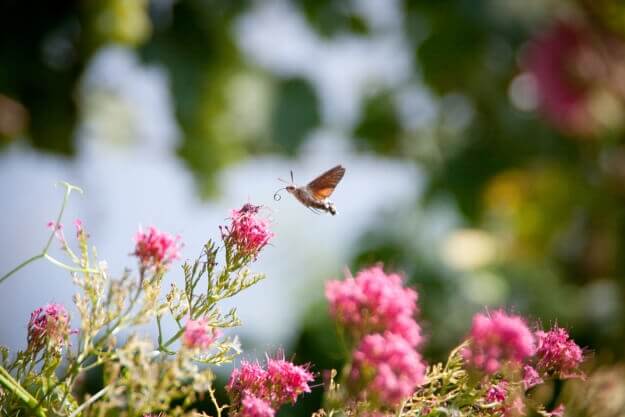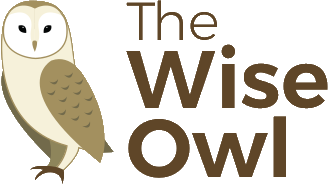Monday saw the start of British Flowers Week 2018 so it seems only fitting that we should celebrate the glorious riot of colours and fragrance that summer blooms brings.
Moreover, flowers are at the heart of a healthy ecosystem and it is this that provides the foundation for the one thing we love more than British flowers – British Garden Birds!
Historically, the song birds we’ve become accustomed to seeing in our gardens are drawn to woodland or, having adapted to interacting with man, farmland. The fact that Britain now has so little woodland remaining is a key factor in why bird numbers are so low. Add the fact that hedgerows are an increasingly rare sight and the focused commercialisation of farming land and it’s no surprise that wild birds find the British countryside much less appealing.
On the flipside, it’s precisely because of these constraints that birds are drawn to our gardens – and why they’re so vital to the bird’s survival. The key to attracting birds is to replicate their favoured environments as best we can and to ensure we get the widest variety of birds, it’s important that we ensure variety in our gardens.
Through intelligent planting – as well as NOT planting – not only will you create a beautiful environment in which you can spend your summer, you’ll also support the whole food chain, creating food and protection for mini-beasts and other wildlife as well as birds.
Yes, I said “not planting! By leaving parts of your garden untouched and, dare I say it, a little wild, you create a safe area for wildlife away from human influences. Undisturbed logs, an overgrown patch of longer grass, a compost heap – all provide an excellent breeding ground and cover for insects and butterflies. Birds such as wrens and robins will be looking for invertebrates to eat, so by helping insects, you help the birds.
Even if you can’t bring yourself to let the garden run wild, it’s important to incorporate variation so that you can provide food and shelter for every step in the food chain.
- Trees, hedgerows and shrubs that provide fruit, seeds, cover and flowers at different times of the year. Smaller birds such as tits and robins will look to nest in dense hedging and undergrowth is a perfect breeding ground for bugs.
- Allow some areas of lawn to grow longer to encourage egg-laying insects.
- A bug hotel to give your local insects somewhere to hibernate, breed and thrive.
- And don’t forget to incorporate a source of water (be it a pond or a bird bath). From bugs to moths, from bees to small mammals, they will all benefit from water – and the other animals it will attract.

Hummingbird Hawk Moth by Marcel Oosterwijk. Licensed under CC BY-SA 2.0 via Wikimedia Commons – http://creativecommons.org/licenses/by-sa/2.0
Popular Plants To Consider
Red Valerian (Centranthus ruber)
Flowering from late Spring to Autumn, this perennial is a perfect border all-rounder, offering cover and food, as well as colour and scent for a long period.
Apple trees
The beautiful spring blossom and autumn apples makes this a no-brainer. However, on top of that, they are perfect for attracting insects, birds and hedgehogs.
Poppies
Ideal for a smaller garden (or pots in a yard), poppies flower from June to September, attracting bees and smaller pollinating insects whilst they offer good foraging cover for mini-beasts and smaller ground-feeding birds, such as chaffinches, robins and wrens.
Lavender
With beautiful scented blooms through the summer, Lavender is a firm favourite with bees and butterflies. And not only do birds go wild for the seeds once the flowers fade, they’ve been known to use the aromatic leaves as disinfectant in their nests, killing bacteria and protecting their chicks.
Honeysuckle
Climbers such as honeysuckle and wild ivy are extremely good for wildlife as they give cover for insects, winter berries for thrushes and warblers and nectar for butterflies, etc. They are not really suitable for small gardens as they do grow fast.
Fire thorn (Pyracantha)
This shrub’s dense foliage and thorns provides excellent cover for birds. Furthermore, it produces an abundance of winter berries which, along with its white blossom makes it very attractive to a wide variety of wildlife.
Renowned for its hardiness, it flourishes well both in sun and shade and as it can take controlled pruning, it is ideal for hedging.
Sunflower
Given how central Sunflower hearts are at LoveGardenBirds, it would be a surprise if we didn’t mention Sunflowers!
Glorious flowers in a range of stunning colours, a plethora of seeds and available in many sizes, sunflowers are almost the perfect garden plant for a bird-watcher. Attracting all manner of smaller birds – from sparrows to finches, siskins to tits – as well as bees and pollinating insects, you can train your binoculars on a sunflower all summer and autumn.
Ensure they’re provided for all year round
Of course, during the winter, all these resources start to disappear. Insects will be hibernating whilst fruit, berries and seed will be in extremely short supply. As such, this is when it’s even more important that you keep your bird bath regularly topped up (breaking any ice that forms in the winter) and buy a good quality bird feeder.
You will find an enormous variety of foods are now available – sunflower hearts, niger seed, mealworms, suet fat balls and our unique seed mixes – designed to attract and satisfy a wide diversity species all year round!
***
Any tips? Let us know in the comments what you plant in YOUR garden to attracts birds…



